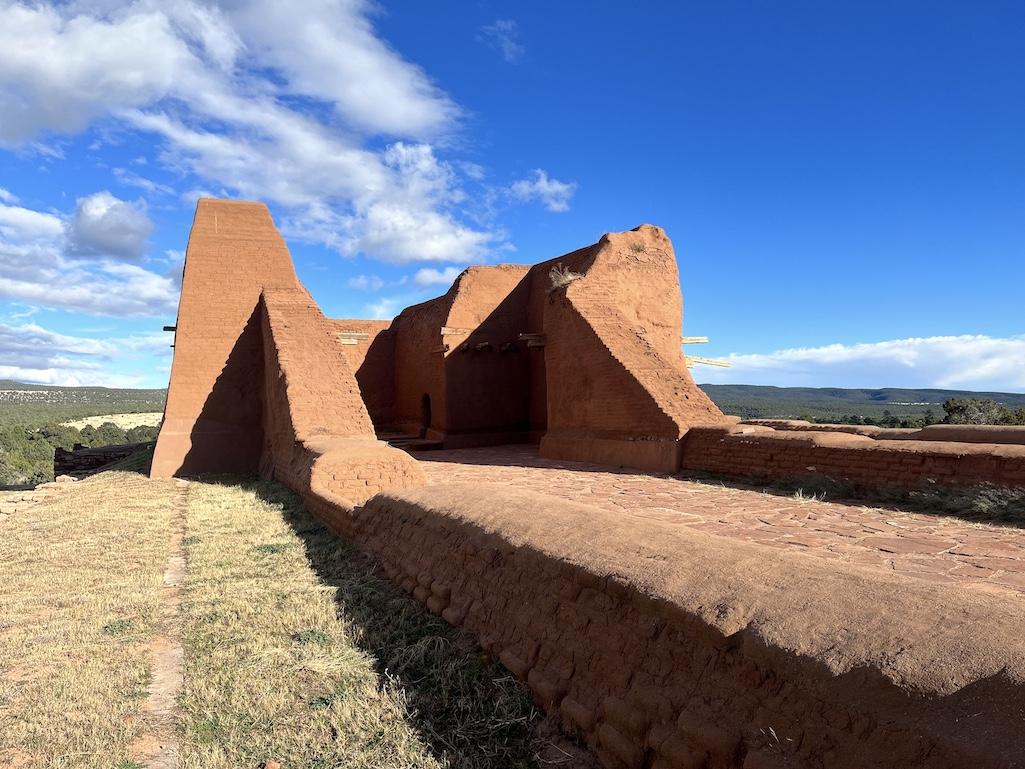
Research is being conducted to determine how current climate conditions are affecting historic structures in the Southwest, including the Spanish mission ruins at Pecos National Historical Park/Kurt Repanshek file
Baseline climate data is being collected at four National Park System units in the Southwest to help the National Park Service understand how best to respond to predicted climate futures and their impacts.
"The Southwestern U.S. is a climate change hot-spot (4th National Climate Assessment, 2018). Increased temperatures and drought conditions have resulted in destroyed heritage resources, and atypical extreme precipitation events have caused flooding, resource damage and erosion," said Ian Hough, the agency's Vanishing Treasures program coordinator based in Santa Fe, New Mexico.
"Heritage resources in the region are being impacted in severe and unexpected ways," he added. "As the weather events and climate in general become more unpredictable and severe, threats will increase and standard approaches to management will no longer be relevant."
The four parks involved in the current round of data gathering are Pecos National Historical Park, where the work is focused on the Spanish Colonial Missions; Salinas Pueblo Missions National Monument, where the work is centered on the Quarai Mission Church; San Antonio Missions National Historical Park; and Tumacácori National Historical Park.
The parks and their structures are "nationally significant, continue to serve as places of worship and commemoration, and connect to communities, tribes, our neighbors in Mexico and a global community of craftspeople and preservationists," Hough said in an email. "Like most built heritage in the Southwestern U.S., they are constructed of local materials using traditional techniques, and in forms that are adapted to the environment. They are particularly susceptible to the environment because of their age, fragility, and state of preservation. In the last decade, each has experienced loss of fabric, archaeological materials and landscape features. It is critical that we understand their vulnerability to climate change and implement strategic preservation approaches."
Back in January 2023 contributor Kim O'Connell noted that in a research paper published in Heritage Science in November 2021, a group of preservationists, archaeologists, and masonry experts from the National Park Service, U.S. Department of Agriculture, and the University of Arizona noted that intensifying rainfall is likely to cause increasing damage to earthen architecture at Tumacácori and similar sites in the future.
“Balancing the preservation of earthen architecture and visitor enjoyment is a difficult task and, throughout the history of the NPS, these two factors have led to a sense of overwhelming urgency: we must protect architecture now, before any more is lost,” the authors concluded in that paper. “Couple that with limited testing on the mechanisms that cause structural damage, and NPS cultural resource specialists are left to manage fragile resources with assumptions made from anecdotal observations.”
Hough said the current work "will include the assessment of site conditions and identification and monitoring of primary vulnerability characteristics or vital signs that allow managers to understand resource health in light of climate change."

 Support Essential Coverage of Essential Places
Support Essential Coverage of Essential Places






